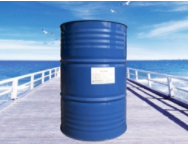Amino-terminated polyether is a new material just emerging in the ninth and ninth centuries of last century. It is a curing agent of epoxy resin. The resin cured by amino-terminated polyether has excellent toughness, impact resistance and low temperature resistance. Because of the low exothermic peak during curing, large epoxy resin components can be poured. Because of the low color value of the product, the cured resin can be poured plain. The casting is crystal and transparent. It is also an additive of engine fuel oil, which plays an anti-deposition role. It is also an additive of lubricating grease to improve the wear resistance of engine parts. In addition, amino-terminated polyethers are also widely used in surfactants, water-soluble coatings and binders.

There are many methods to synthesize amino-terminated polyethers. The main methods are hydrolysis method, aminophenoxy method, ammonia hydrolysis method, leaving group method, etc. The industrial production of amino-terminated polyethers abroad mainly adopts high pressure reduction amination.
At present, there are two main approaches to the synthesis of amino-terminated polyether (ATPE):
1) Catalytic reduction amination: starting with the terminal hydroxyl group of polyether polyols, the terminal hydroxyl group of polyether polyols is replaced by the ammonia (amine) group in the ammonia hydrolysis reaction. This is also the main method of industrial synthesis of amino-terminated polyether (ATPE). The industrial production of ATPE abroad mainly adopts high pressure reduction amination method, but there is no enterprise production in China.
2) Departure group method: This method is generally divided into two steps. The first step is esterification reaction. Starting from the active hydrogen of hydroxyl end groups of polyether polyols, the end-capping reaction is carried out with compounds (acetyl p-toluene sulfonate, acyl chloride, halogen, carboxyl, aldehyde, etc.) with easily deparnated or unsaturated groups. The second step is amination trans-reaction. ATPE should be obtained by reacting the first product with amine (monoamine or polyamine).